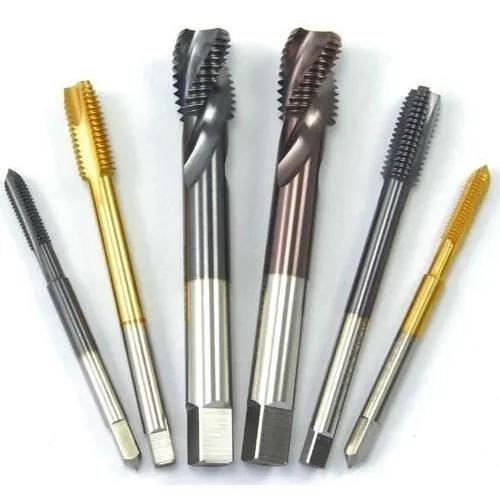
Pre-Drilling:
Prior to tapping, it is important to drill a hole in the workpiece with a diameter slightly smaller than the desired thread size. This pre-drilled hole serves as a guide for the tap.
Lubrication:
Applying cutting fluid or tapping lubricant during the tapping process helps reduce friction, heat, and tool wear. It also aids in chip evacuation.
Speed and Feed Rates:
Tapping should be performed at an appropriate speed and feed rate to ensure proper cutting and thread quality. These parameters may vary depending on the material being tapped and the tap size, so it is important to refer to the manufacturer’s recommendations or machining guidelines.
Tap Handles and Holders:
Machine taps are typically used with tap handles or holders that provide a secure grip and facilitate turning the tap into the workpiece. Tap handles come in various designs, including T-handle wrenches or ratcheting tap wrenches.
Machine taps are available in different thread sizes, pitches, and materials to suit various applications. It is crucial to select the correct tap size and type based on the desired thread specifications and the material being tapped.